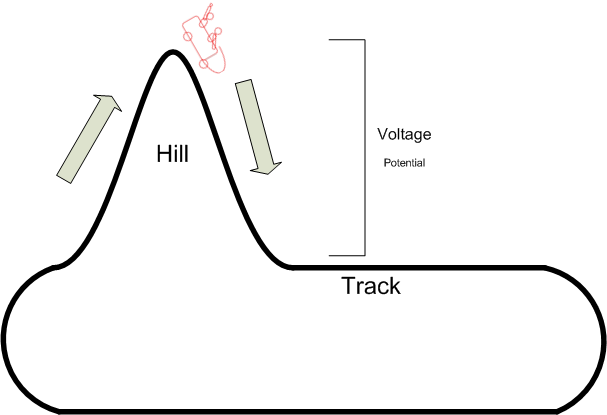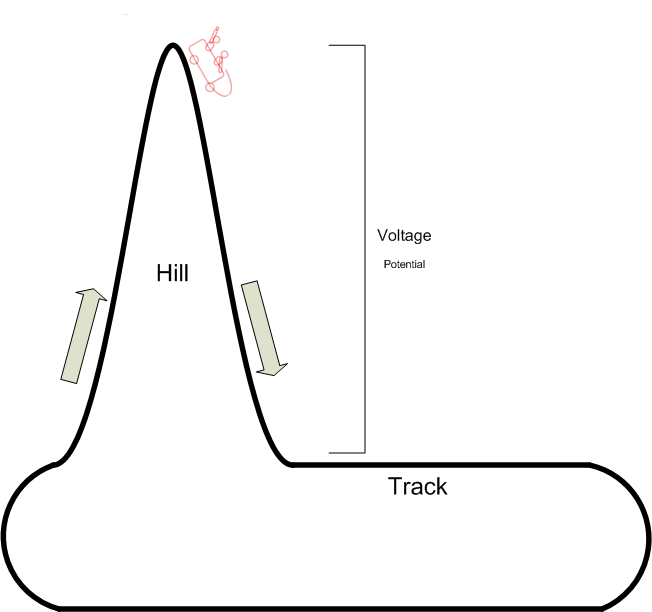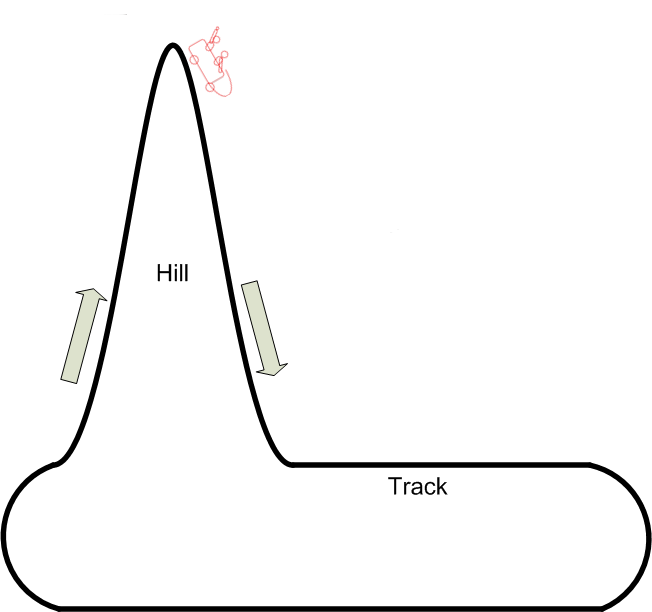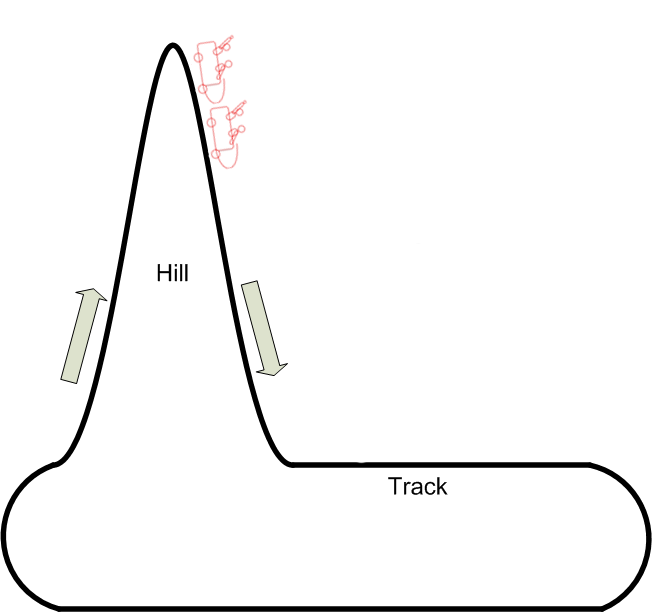Voltage, measured in volts, Potential Difference
I like to think of voltage as potential difference. What better to explain potential difference than a roller coaster drop. It is clear to see that the taller hill on the right will cause the roller coaster car to travel further and therefore have more time to accelerate. The roller coaster on the right has more potential than the roller coaster on the left.
Voltage is the potential difference between any two points in a circuit.

|

|




 GeekDIYMechanic - Basic Automotive Electronics and Circuit Overview
GeekDIYMechanic - Basic Automotive Electronics and Circuit Overview